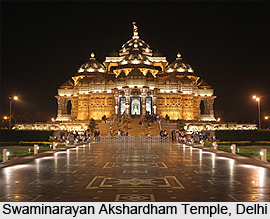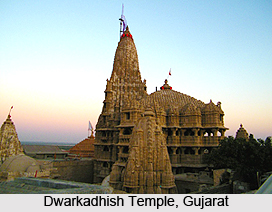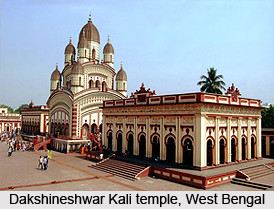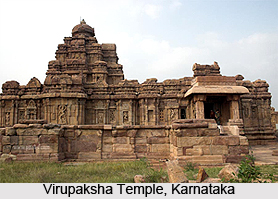 Hindu temples in India are regarded as sacred places for the people following Hindu religion, where man can forget all his sorrows and connect himself with almighty God. In most of the temples there is the presence of `murtis` or idols of the Hindu deity to whom the temple is dedicated. They are usually dedicated to one primary deity, called the presiding deity, and other subordinate deities associated with the main deity. Some of the temples are dedicated to several deities, whereas some have symbols instead of a `murti`.
Hindu temples in India are regarded as sacred places for the people following Hindu religion, where man can forget all his sorrows and connect himself with almighty God. In most of the temples there is the presence of `murtis` or idols of the Hindu deity to whom the temple is dedicated. They are usually dedicated to one primary deity, called the presiding deity, and other subordinate deities associated with the main deity. Some of the temples are dedicated to several deities, whereas some have symbols instead of a `murti`.
Architecture of Hindu Temples in India
The main focus of temple architecture in Vedic India was to blend the temple with its natural surroundings. A major consequence of this style of temple design was the construction of several cave temples across the Indian subcontinent. Most of the early Hindu cave temples were carved out of a single large rock. A prominent feature of these cave temples was the elaborate sculptures of various Hindu deities. Hindu temples are built on the principles of Vastushastra. The Vastushastras describe temple as a symbolic, miniature representation of the outer space. A typical Hindu temple consists of the following major elements - an entrance, often with a porch; one or more attached or detached mandapas or halls; the inner sanctum called the garbagriha, and the tower build directly above the garbagriha.
Hindu Temples in North India
 Most of the Hindu temples in North India are the testaments of typical Nagara style of architecture. The constructions of these temples have followed specific rules and plans and are dedicated to various deities. Some of the temples however have also retained the local flavour and native styles. These form important sites of pilgrimage sheltering a sea of devotees. The traditions, beliefs and culture prevailing in the northern part of India can be aptly witnessed among the customs and rituals of these temples. Prominent Hindu temples in North India include Swaminarayan Akshardham, ISKON Temple, Baijnath Temple, Chintpurni Devi Temple, Amarnath Cave, Vaishno Devi, Baba sodal mandir, Kalpeshwar Temple, Nandaprayag Temple, Banke Bihari Temple and many others.
Most of the Hindu temples in North India are the testaments of typical Nagara style of architecture. The constructions of these temples have followed specific rules and plans and are dedicated to various deities. Some of the temples however have also retained the local flavour and native styles. These form important sites of pilgrimage sheltering a sea of devotees. The traditions, beliefs and culture prevailing in the northern part of India can be aptly witnessed among the customs and rituals of these temples. Prominent Hindu temples in North India include Swaminarayan Akshardham, ISKON Temple, Baijnath Temple, Chintpurni Devi Temple, Amarnath Cave, Vaishno Devi, Baba sodal mandir, Kalpeshwar Temple, Nandaprayag Temple, Banke Bihari Temple and many others.
Hindu Temples in West India
West India also hosts a number of Hindu temples characterized by flamboyant designs and magnificent architecture. Indian art and architecture have beautifully blended in these temples which stand gracefully among the architectural marvels of India. This region of the country houses some of the ancient temples of India through which captivating artistry peeps out beautifully. These temples also exhibit unique customs which reflect the prevailing traditions in the West Indian states. Some of the important Hindu temples of West India are Dwarkadhish Temple, Rukmini Temple, Sri Manquesh Temple, Ashta Vinayak Temples, Somnath Temple and others.
Hindu Temples in East India
Some of the most renowned Hindu temples of the country are located in Eastern India in the states of Bihar, Jharkhand, Odisha and West Bengal. They serve as the famed pilgrimage centres and are visited by the people hailing from all around the country. Outstanding craftsmanship of various architects can be witnessed in the Hindu temples in East India. Most of these temples have a tomb like structure which is a common architectural element. The modes of worship in these temples vary according to the cultural beliefs and presiding deities of the temple.
 Famous Hindu temples of East India are Konark temple, Lingaraja Temple, Dakshineshwar Kali temple, Ajqaivinath temple, Jagannath temple, Mukteswara temple and many others.
Famous Hindu temples of East India are Konark temple, Lingaraja Temple, Dakshineshwar Kali temple, Ajqaivinath temple, Jagannath temple, Mukteswara temple and many others.
Hindu Temples in South India
Hindu temples in South India provide the religious essence of south Indian states like Kerala, Karnataka, Tamil Nadu and Andhra Pradesh. The architecture of these temples follows different school of arts such as Chalukyan, Pandya, Holysala and Dravidian. Apart from signifying the traditions and beliefs of South India these temples also enrich the cultural heritage of the nation. Ancient rulers have contributed a lot in the construction of these temples and strengthening the religious beliefs of specific regions. Dedicated to different deities, these temples stand as the architectural marvels of India. Noted Hindu temples of South India include Tirupati Temple, Chennakesava Temple, Virupaksha Temple, Ettumanoor Temple, Meenakshi Temple, Ekambareswarar Temple and many more.
Hindu Temples in Northeast India
Hindu temples in Northeast India are known for their intricate carvings and mesmerising sculptures. Some of the finest testaments of architecture stand in northeast India as magnificent temples, especially in Assam. The embellishments of these temples are also immensely beautiful making them an addition to significant religious places, sites of tourist interest. Some of the prominent temples of Northeast India are Umananda Temple, Lankeshwar Temple, Tripura Sundari Temple, Shri Hanuman Thakur Temple, Thangal General Temple etc. Rituals of worship are unique in these temples following Northeast Indian traditions.
 Hindu Temples in Central India
Hindu Temples in Central India
The states of central India, Madhya Pradesh and Chhattisgarh, invites a huge number of pilgrims as well as tourists. These were mostly erected in ancient and medieval India and showcase some of the splendid artistry through their sculptures and architectural features. Various Hindu deities are worshipped in these temples. Profuse carvings are the most important features of these temples which reflect the prevailing architecture in different eras. Some of these temples are so ancient that they have been unearthed through archaeological excavations and have revealed cultural phases of bygone eras. Prominent Hindu temples of central India include Khajuraho Temples, Sas-bahu mandir, Omkareshwar Temple, Chintaman Ganesh Temple, Gandheswar Temple, Adbhar Ashtbhuji Temple, Vishnu Temple, Bhoramdeo Temple etc.











